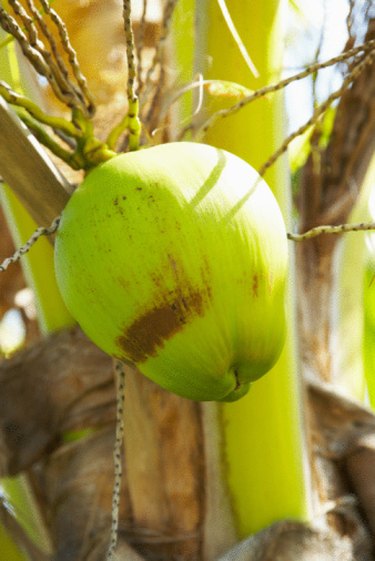
According to the Purdue University Agriculture website, watering a coconut palm, or Coco nucifera, with salt water has no improving effect. Coconut palms are salt-spray tolerant but should only be exposed to limited salinity levels when watering.
Maximum Salinity
Video of the Day
Coconut palms can withstand plenty of environmental factors, including low or high pH, salty spray, slopes, insects, excessive heat and even poor soil. But when watering a coconut palm tree yourself, don't use water exceeding a salinity level of .6 percent.
Video of the Day
Salt Necessity
Coconut palms do not need salt to survive, despite their presence on sandy beaches around the world. The coconut palm can be grown inland just as well as on the coast, according to the University of Florida Extension website. The sandy beach locale so often seen as a backdrop is due to the palm's germination process, which occurs when foreign coconuts wash ashore and germinate naturally in the sand.
Salt in the Soil
Salty, brackish soils do not affect coastline coconut palms, and the trees do well despite it. As long as the sand is well-draining and between a pH of 5.0 and 8.0, the palm will thrive.
Fresh Water Requirements
Coconut palms require a minimum of 30 to 50 inches of rainfall a year, in addition to temperatures that do not fall below 32 degrees Fahrenheit. In home gardens, coconut palms should be watered with an inch of rainfall or fresh-water spray once a week, especially in the first year of transplantation.